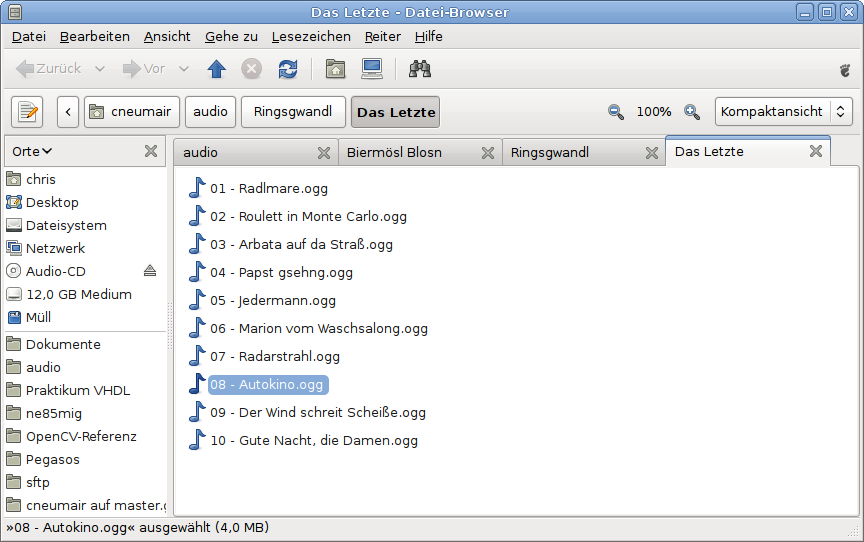Since everybody nowadays comments on the future of GNOME/GTK+, I’d also like to add my two cents – although more briefly than others.
In short, I think we’ve reached our objectives and should polish GNOME 2 ’til doomsday.
3.0? No!
As of writing, I see no reason for delivering a (long-term) API/ABI-incompatible GNOME 3.0 or GTK+ 3.0, and many have written the same before. I’m just repeating it here to make sure that everybody, including the kind-hearted individuals who try to force a GSEAL’ed GTK+ to make it more clean, are aware of the massive opposition against this plan.
C is ugly as hell and does not support public/procted/private classes. Therefore, no C programmer can really mind ugly exposed internals. Adding setters and getters is a in principle a good idea, but there is no reason to break working applications that access data exposed in GTK+ structs. Maybe a GSEAL() fan could tell me how third-party subclasses that are derived from GTK+ stock widgets can access protected member variables? If you just expose getter/setter functions, everybody can access the internals, and you could have put it into the object’s struct anyway.
Status Quo: Conservative + Boring
The current GNOME and GTK+ development clearly “stalls” or “stagnates”. From the point of a developer this sounds horrible. However, you could also formulate that positively and call it “solid”. We’ve come a long way. Since GNOME 2.0, our target was to deliver a non-obtrusive, simple and useful desktop environment. We’ve done our best, and people love it. I know many people who use GNOME because it’s simple and clean.
Radical Concepts => New Project
We created a successful brand by radically sticking to one strategy: Simplicity. The current traditional desktop approach without any fancy database concepts is very successful and is used by many people.
The brand will be damaged if we throw in half-baked complex interaction concepts. Like many of you my dear readers, I love the idea to use the computer as a personal assistant or secretary, and I’ve also thought how it could work in such a scenario. However, at least radical concepts (“GNOME Online Desktop”, “everything is organized as database”, etc.) should clearly be put forward outside the GNOME project, at least until they are mature and proven in a testing environment with average people instead of “innovation” fanboys. “Innovation”, after all, is just a buzzword, and in science they often just re-invent old concepts. I’m sure that the scientists among you will agree with this.
It may sound a bit disappointing that we’ve become conservative, but that’s the typical life cycle of people in western civilization, why shouldn’t it also apply to software projects with well-defined objectives?
